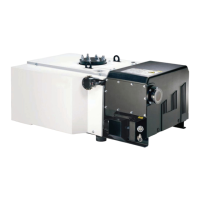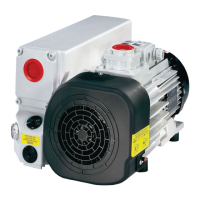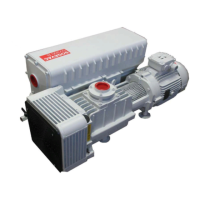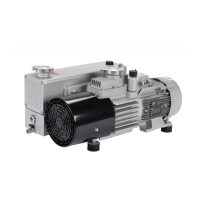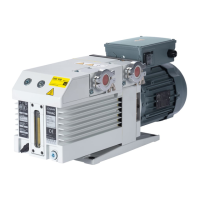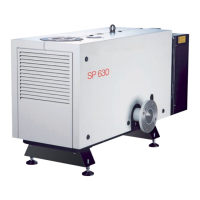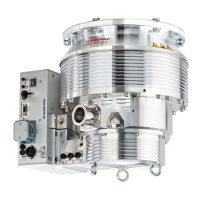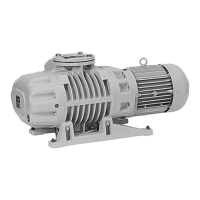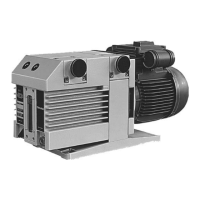130001815_002_C0 SV 40 B – 65 B – 100 B – 120 B ATEX Cat 2 11/2016 39 / 74
The SOGEVAC
SV40 B – 65 B - SV100 B – SV120 B can be equipped with
different types of gas ballasts, as defined by their cat-nr.
Changing the type of GB can change the ATEX temperature class ! Consult us
before any GB retrofit is undertaken ! Such a modification must be done by
Leybold Service only, and the pump will bear a new P/N.
The GB flow is valid for a pump operating at ultimate pressure (inlet closed)
and for a GB gas supply of 1 bar abs. GB gas supply pressure max. 1 bar abs.
Standard gas ballast
This gas ballast corresponds to the most important part of applications.
Gas ballast "Big Flow"
This kit is intended for the applications where more vapours of condensable
gases could come into the pump. Changing the type of GB can change the
ATEX temperature class ! Consult us before any GB retrofit is undertaken !
Such a modification must be done by Leybold Service only, and the pump will
bear a new P/N.
On application where vapours are always present, the use of a permanent GB
is recommended. In this case a lower ATEX temperature class can be
reached.
All gas-ballasts can be connected on a DN 16 ISO-KF connection to an inert
gas supply. If gas supply piping and valves are fitted to the gas ballast it must
be ensured that a continuous flow of gas through the gas ballast is present
when the pump gas ballast valve is open (for example by use of a suitable flow
meter or suitable pressure measurement). This is to ensure that no adiabatic
compression occurs in the gas ballast pipe which could lead to a high
temperature. Gas supply for gas ballast must come from safe area.
Do not open the pump to condensable vapours until it has warmed to operating
temperature; pumping process gas with a cold pump results in vapours
condensing in the oil.
For processes with a high proportion of condensable vapours, slowly open the
intake line, after reaching the operating temperature to prevent excessive
quantities of vapour entering the pump.
One sign of condensation of vapours in the pump is a rise in the oil level during
operation of the pump.
During pumping, vapours may dissolve in the oil. This changes the oil
properties and causes a risk of corrosion in the pump. Therefore, do not switch
off the pump immediately after completion of the process. Instead, allow the
pump to continue operating with the gas ballast valve open and the intake line
closed until the oil is free of condensed vapours. We strongly recommend
operating the pump in this mode for about 30 minutes after completion of the
process.
In cyclic process operation, the pump should not be switched off during the
intervals between the individual working phases, but should continue to run
with gas ballast valve open and intake port closed (if possible via a valve).
Power consumption is minimal when the pump is operating at ultimate
pressure. Once all vapours have been pumped off from a process (e.g. during
drying), the gas ballast valve can be closed to improve the ultimate pressure.
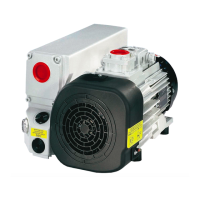
